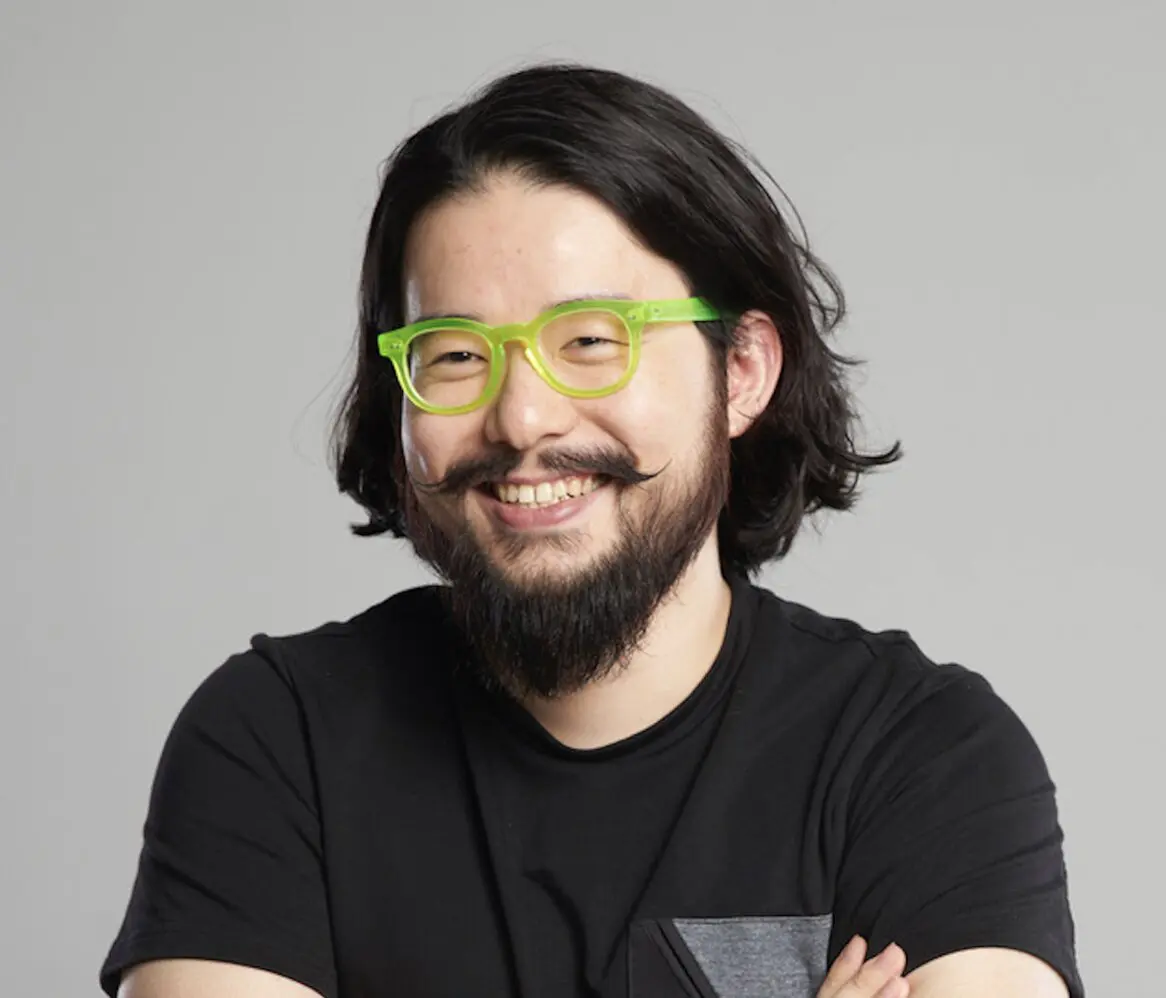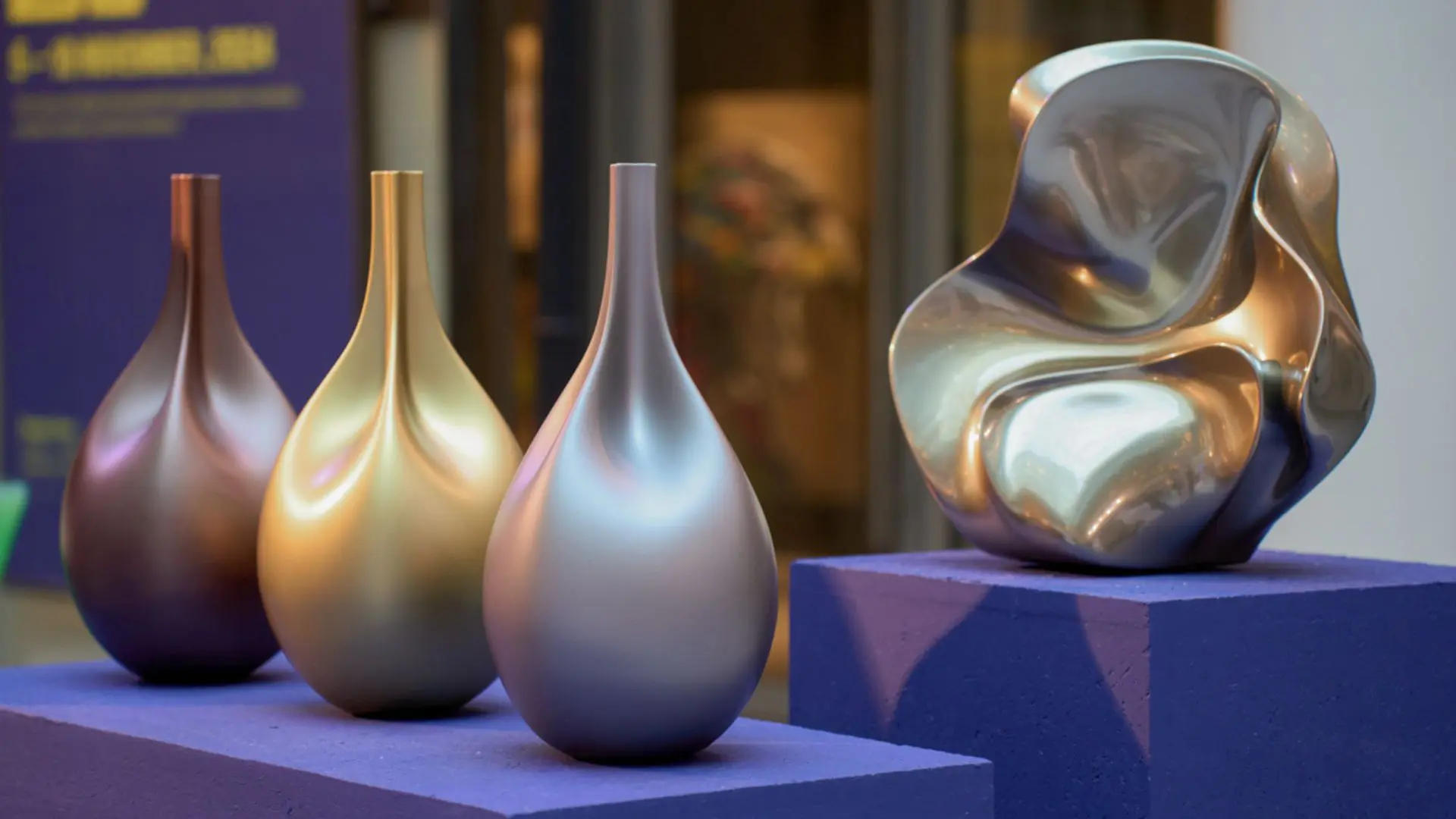Navigating the New Design frontier: AI’s role in transforming creative processes
How has the design process, exemplified by frameworks like the Double Diamond, evolved with the use of AI? Is there still a place for human-led innovation within AI-driven design processes? And how can designers and researchers immerse and invest themselves in this AI transformation?
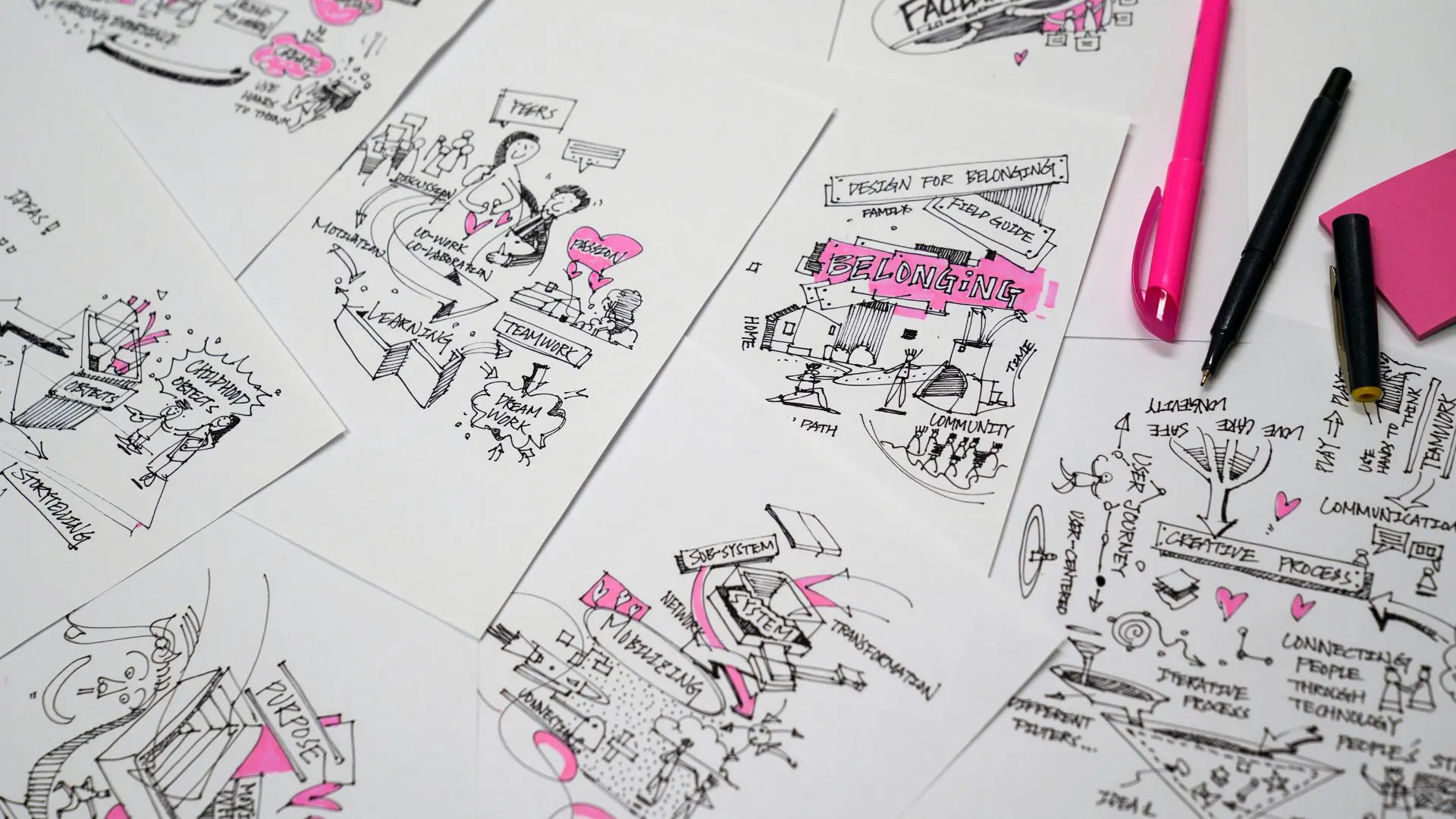
In April, I attended HarvardXR 2024 Extended Intelligence, where I was astounded by the breadth of immersive technologies, the diverse applications of AI, theoretical transformations, social challenges, and emerging issues in design justice and education.
In this stage of my career, I often feel like an “AI immigrant.” Like many in my age group, including designers and academics, I find myself “swamped” by the buzz surrounding artificial intelligence (AI). For the younger generation, however, AI has seamlessly integrated into their education, careers, and daily lives—marking a significant paradigm shift across most disciplines.
I am both impressed and challenged by the range of AI tools and the evolving design processes. The design landscape and creative industries are undergoing profound changes, encompassing everything from frameworks, tools, and skills to processes, policies, justice, culture, and even power dynamics.

The integration of generative AI tools has prompted me to reflect on several questions: How has the design process, exemplified by frameworks like the Double Diamond, evolved with the use of AI? Is there still a place for human-led innovation within AI-driven design processes? And how can designers and researchers immerse and invest themselves in this AI transformation?
These questions represent just the tip of the iceberg concerning AI, the creative process, and design within the social context. However, this article will highlight three crucial insights:
- Curation is just as important as creation: curation as equally as critical as creation itself.
- Distinction between design ideas and insights: design ideas cannot directly translate into the aspect of taste and lifestyle.
- Enhancing integration through imagination: leveraging imagination to elevate the integration of new concepts.
Curation is just as important as creation
The advent of AI and its integration into various fields has significantly reshaped the design process. A well-known model illustrating this transformation is the Double Diamond, introduced by the Design Council in 2003.
This model outlines an iterative process of convergence and divergence through four key stages: discover, define, develop, and deliver. These stages collectively represent a methodical approach to fostering creativity and innovation in design (Figure 2).
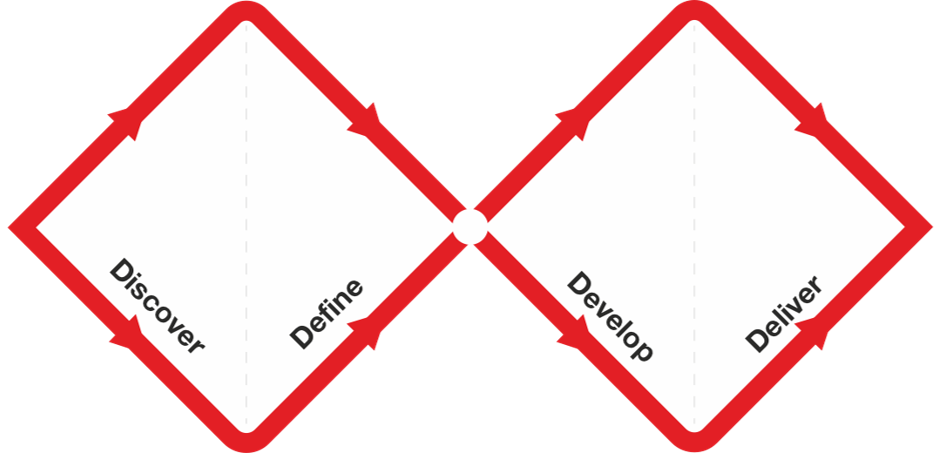
How has the design process, such as the Double Diamond, evolved with the integration of generative AI tools?
The integration of generative AI tools has significantly transformed the design process, particularly during the early ideation phase. These tools enable individuals to generate design solutions and ideas more effectively and efficiently.
After two decades, one adaptation of the traditional design process model is the Stingray model, which can be seen as an evolution of the Double Diamond. It includes three stages: train, develop, and iterate (Figure 3). The intention is to highlight how AI-empowered tools enhance the typical creative process.
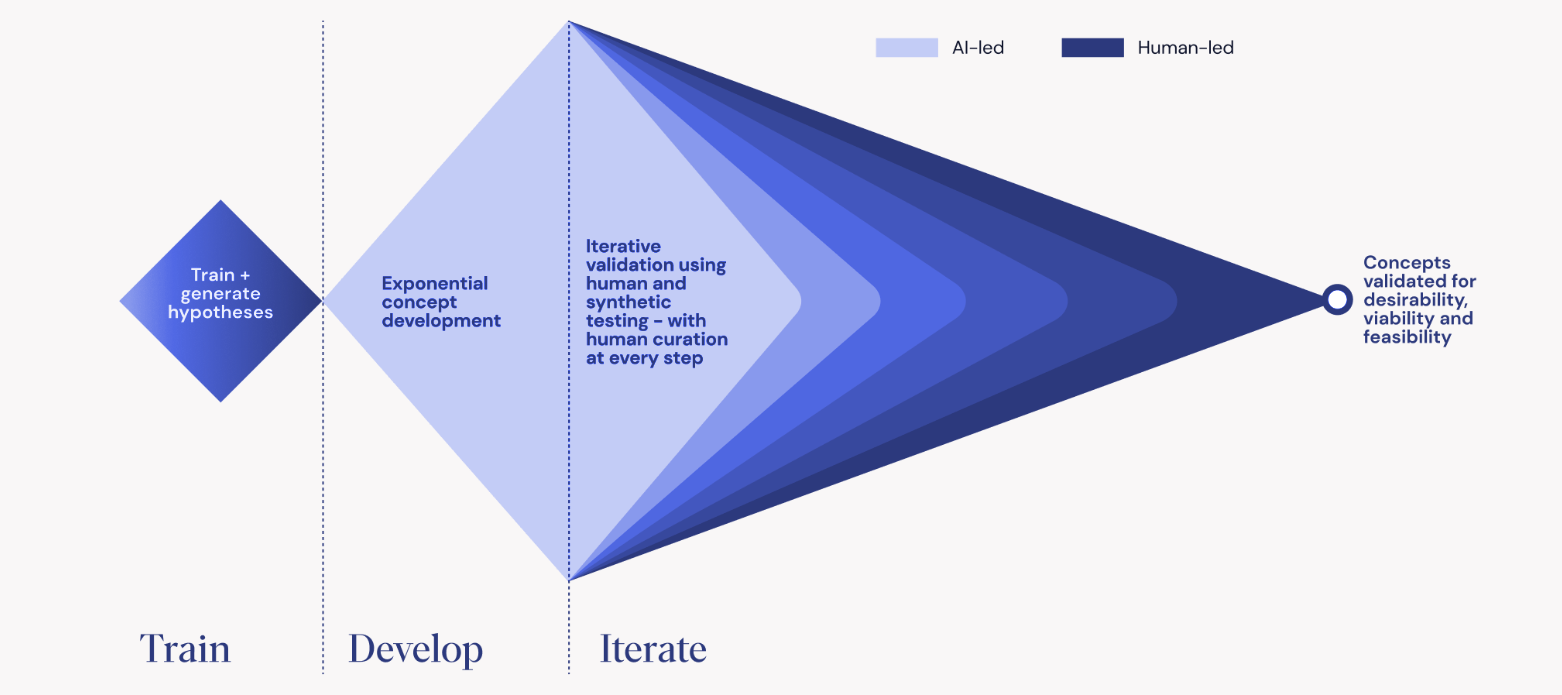
While designers and researchers still need to formulate hypotheses, define challenges, and scope the project, the stages of development and iteration see the most significant changes. With the aid of AI-empowered tools, designers can rapidly generate a multitude of concepts and develop numerous ideas.
Following this, they progress to the iteration stage, where ideas are validated through a combination of AI-led and human-led synthetic testing. This approach aims to incrementally refine outcomes to ensure they meet criteria for desirability, feasibility, and viability.
Distinction between design ideas and insights
Design ideas and insights represent different phases within the design process. In the early stages, ideas often arise from brainstorming and collaborative creation. These ideas can range from intuitive, diverse, practical, to wild and conceptual.
Insights typically emerge from a more structured synthesizing process, drawing on both qualitative and quantitative research. They aim to understand decision-making, human behavior, and reflections, offering valuable learnings to key project stakeholders.
Design solutions, on the other hand, are the outcomes of the design process, which include stages of inspiration, ideation, prototyping, implementation, and refinement. These solutions integrate both ideas and insights.
However, there is a common misconception regarding generative AI tools. Many people believe that these tools’ prompt-driven approach can efficiently produce design solutions. In reality, these generative AI tools are more adept at generating a plethora of early-stage conceptual ideas without validation and experiment.
The transition from ideas and insights to solutions is a time-intensive, research-heavy, and validation-requiring endeavor. It is an iterative process that involves numerous trials and errors to explore a variety of possibilities and scanarios.
I’ve observed and used that most generative AI tools, like Hypersketch (Figure 4), DALL·E, and Midjourney, operate in a more like solution-driven mode. An important consideration is how we can integrate observational results or ethnographic research from fieldwork as a crucial input before generating any ideas. While the prompts in these tools are based on designers’ inputs reflecting their needs or concepts, they often do not directly target the specific needs of users.
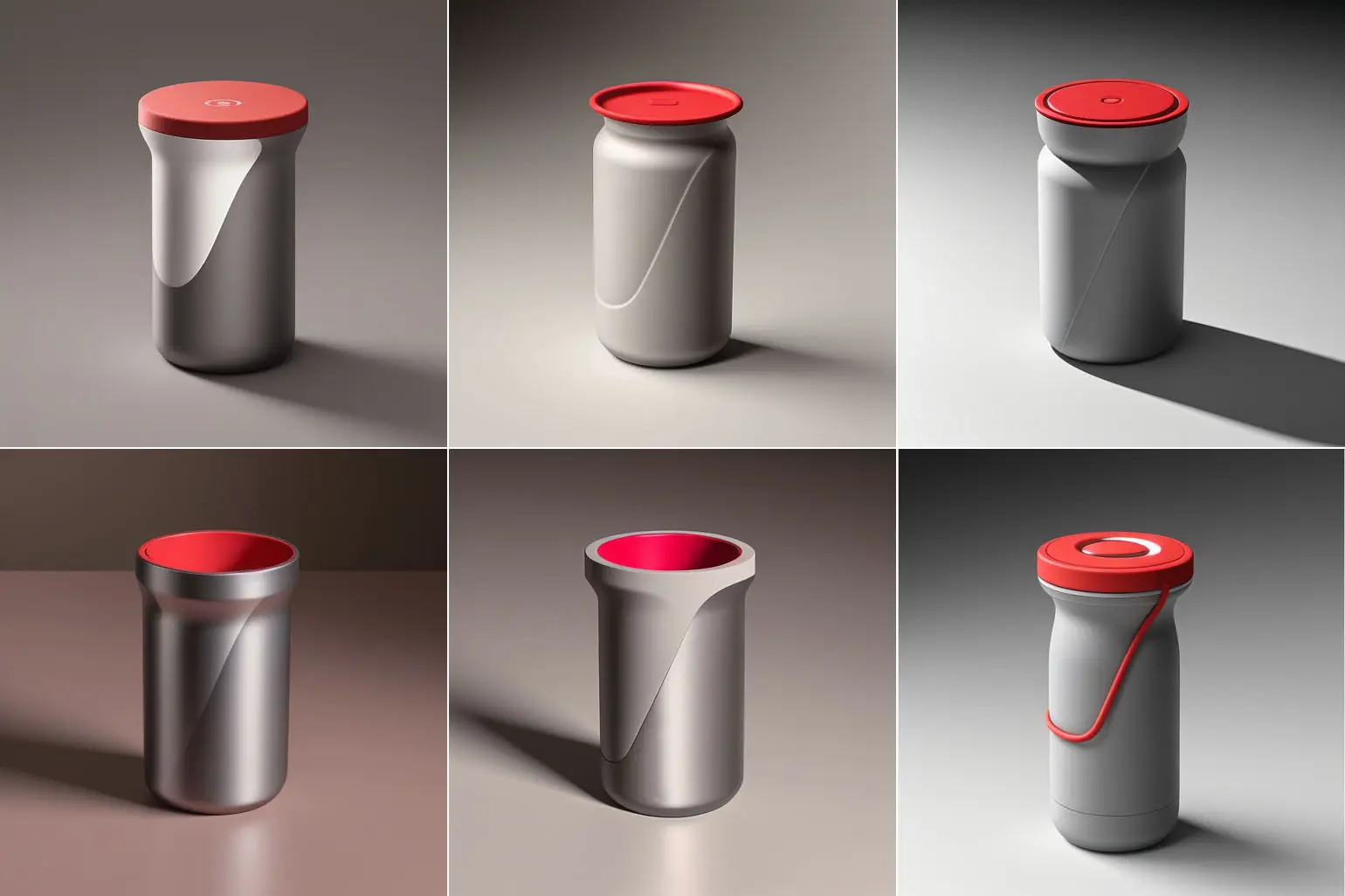
While modern AI tools can incorporate insights from research and generate numerous creative ideas, this abundance does not guarantee that designers or users inherently possess good taste or the ability to help clients choose and evaluate ideas according to their preferences, desirability or lifestyle.
We often find ourselves wondering in a sea of ideas, yet there is a real worry about our ability to effectively filter or curate these ideas to make meaningful progress and impact. It echoes the first takeaway: curation is just as important as creation. Effective curation is shaped by life and work experiences, along with collaboration.
Recognizing the distinction between design ideas and insights is crucial because generating design ideas does not directly translate into aspects such as taste, lifestyle, branding, and culture.
Enhancing integration through imagination
Many AI-empowered tools and software have influenced the challenges toward the next level of competition, from creating individual products to building systemic platforms. These powerful AI-empowered tools “communicate” with each other to make impactful outcomes. For example, besides design tools, there are many academic research tools have integrated AI-empowered function. For example, the ATLAS.ti, a computer-assisted qualitative data analysis software, collaborated with Open-AI to apply AI-empowered coding to identify people’s language pattern, sematic analysis, and meaning forming (Figure 5).
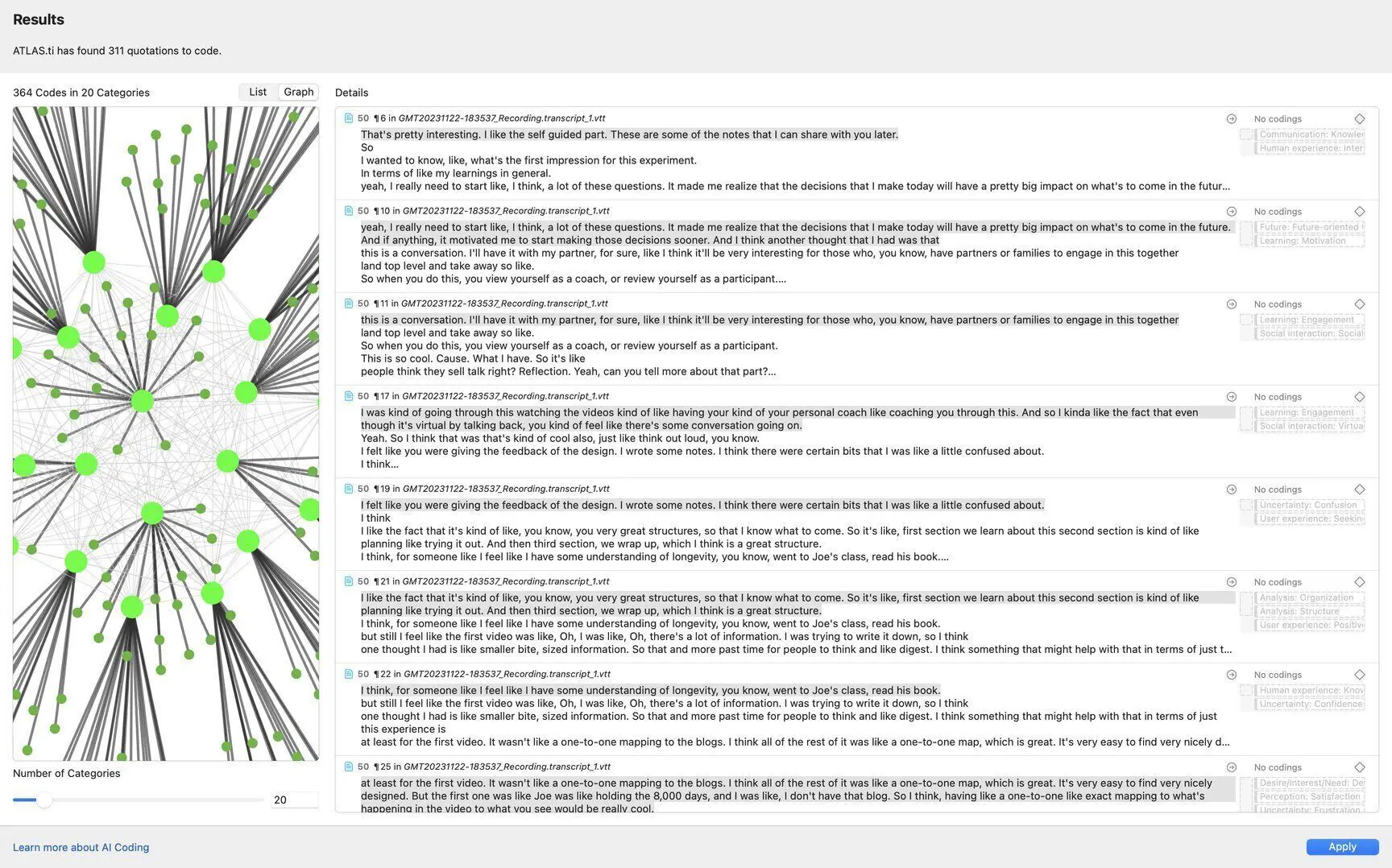
Just as consumers have personal preferences for electronic devices and operating systems, such as Apple or Android, each AI-empowered product operates on its platform. However, the integration of AI-empowered tools has evolved to provide optimal user-centered services and experiences.
Looking ahead, as designers and researchers confront complex socio-technological challenges, the focus may shift from merely solving problems to emphasizing the formation of new perspectives that enable us to envision possible scenarios. How we purposefully leverage our imagination to the future or the challenges to elevate the integration of new concepts with inclusive aspects.
Summary: From Artificial Intelligence to Anticipating Intelligence
In this article, we preliminary explore three aspects centered around AI, the creative process, and design within the social context, including 1. curation is just as important as creation, 2. distinction between design ideas and insights, 3. enhancing integration through imagination.
The AI-powered exploratory Stingray model for innovation has indicated the transformation of our typical design process from the Double Diamond. Is there still a place for human-led innovation within AI-driven design processes? And how can designers and researchers immerse and invest themselves in this AI transformation?
While most academics and industry leaders interpret AI as “artificial intelligence,” we might broaden our understanding of the term to “anticipating intelligence.” This novel interpretation encourages us to use AI to comprehend and solve challenges, adapt to transformation, and drive innovation.
To effectively utilize AI-empowered tools, designers and researchers should adopt a suitable mindset and skillset, prompting deep and comprehensive reflection on the essence of design. This includes considering the creative process, relevant frameworks, and design education. It raises critical questions:
What future are human beings striving for, and how can we achieve it with respect, meaning, justice, and sustainability?
Overall, I want to present a nuanced view of AI’s role in design, advocating for a balanced approach where human creativity and AI capabilities are intertwined to address the challenges of modern design. It invites designers and researchers to embrace AI not just as a tool for efficiency, but as a partner in the creative process that can help push the boundaries of what is possible in design.

Reference

